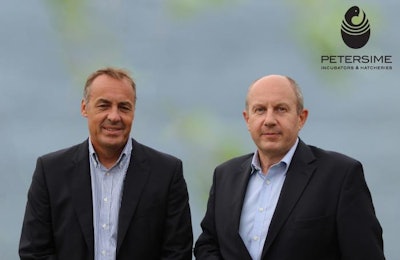
“The bottom line of poultry production begins in the hatchery. If the incubation process is not optimal, it can affect the good work done upstream,” Michel de Clercq, managing director of Petersime, said during the Poultry Performance Conference in Sint-Martens-Latem, Belgium.
Furthermore, a good incubation process "may, in fact, also maximize the previously generated value in the value chain. The challenge is to continue maximizing the potential of genetics and of all the good work previously done in the chain ".
There are many chances of things going wrong during the incubation process, due to the many intergenerational steps in this value chain, which would impact poultry production later. That's why "it is very important to have the technology and good management to ensure that everything stays as optimal as possible in the different steps of production," de Clercq added.
Incubation that mimics nature
To improve the bottom line and facilitate the incubation process, Petersime, a manufacturer of incubators and hatchers, does two things in particular. Paul Degraeve, also managing director of Petersime, spoke about the sensors used in their systems that mimic what happens in nature.
"Not only do we measure the temperature, we carry out measurements that are very close to the embryo. We measure the temperature of the eggshell, egg weight loss and variables of this type," he said. He also referred to the interaction with clients to help them not only in the incubation, but in breeder management and with other issues as well.
The technology Petersime has developed is different, precisely because they have what is known as Embryo-Response Incubation, consisting "of a set of sensors and software in the machine that helps machines to incubate as would happen in nature, something that the competition does not have,” said Degraeve.
Single-stage incubation allows incubation closer to what the embryo needs, because requirements vary. In addition, it is the most biosecure method. Although multi-stage incubators are still made, the vast majority of incubators are single-stage, which is what modern hatcheries use.
The incubation market in the Americas
Petersime’s largest markets are Europe and the Middle East, making up 26 percent and 20 percent of the company's sales, respectively.
Today, the Latin American market represents between 5 and 10 percent of their sales, as Petersime for the past five years has been working and exploring the region.
"What is probably different in the Latin American market, compared to other more traditional markets, is that the incubation industry in Latin America (and in North America as well) is in the transition from multistage incubation to single-stage incubation," said de Clercq.
Providing technology is the easy part. But the trickier aspect is that the people who run these machines understand the process.
"It's a matter of management. You have to train people and teach them new concepts,” he said. Failure to do this will result in disappointment, because you will have excellent technology, but could not make the most out of it.
"Compared to Europe, already in the second or third generation of these machines, Latin America is taking a great leap right now," said Degraeve. This is because they will go from the old multistage machines directly to the most modern single-stage equipment. "That's why we need to help the incubation industry."
Modern incubation is one of the factors that are added to a long list of challenges poultry production faces, such as availability and cost of feed, disease outbreaks, antibiotics, food safety, consumer perceptions, animal welfare, environment, international competition – like that of Brazil, Argentina, the United States and now even Africa – and how to attract and retain professionals and workers.
















